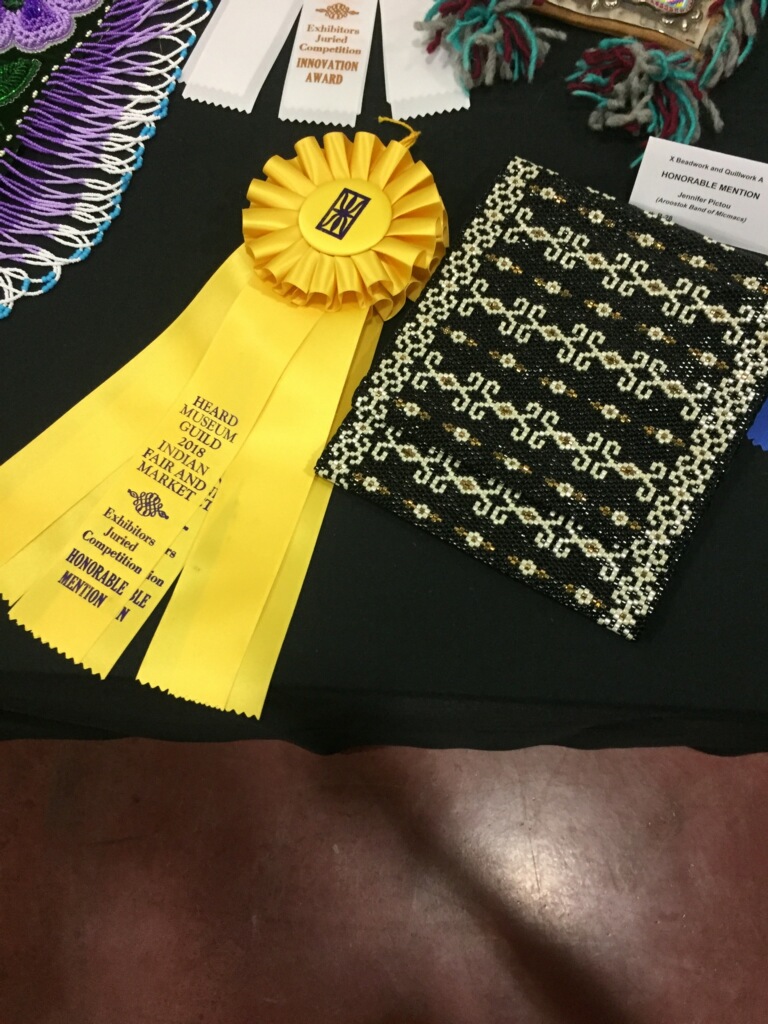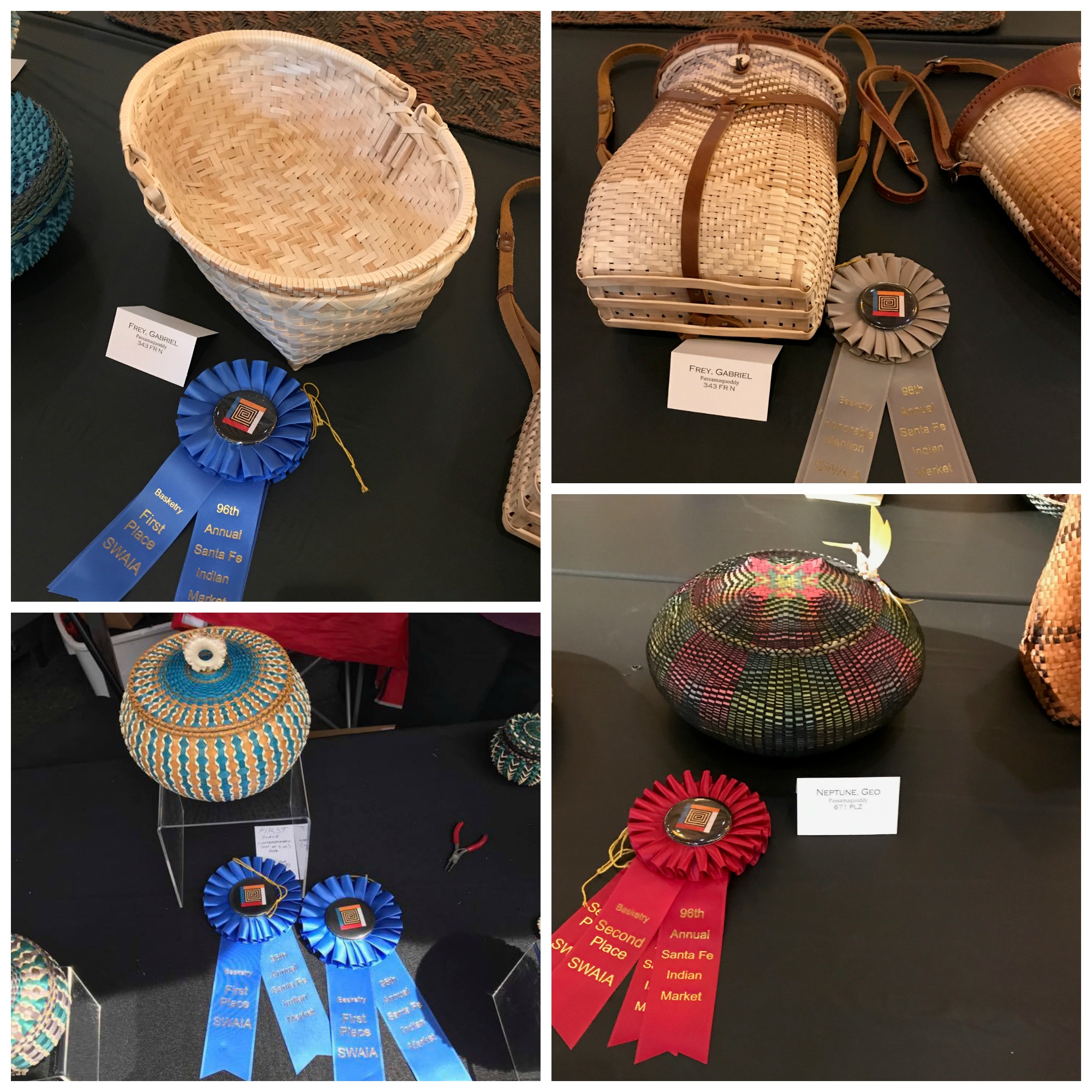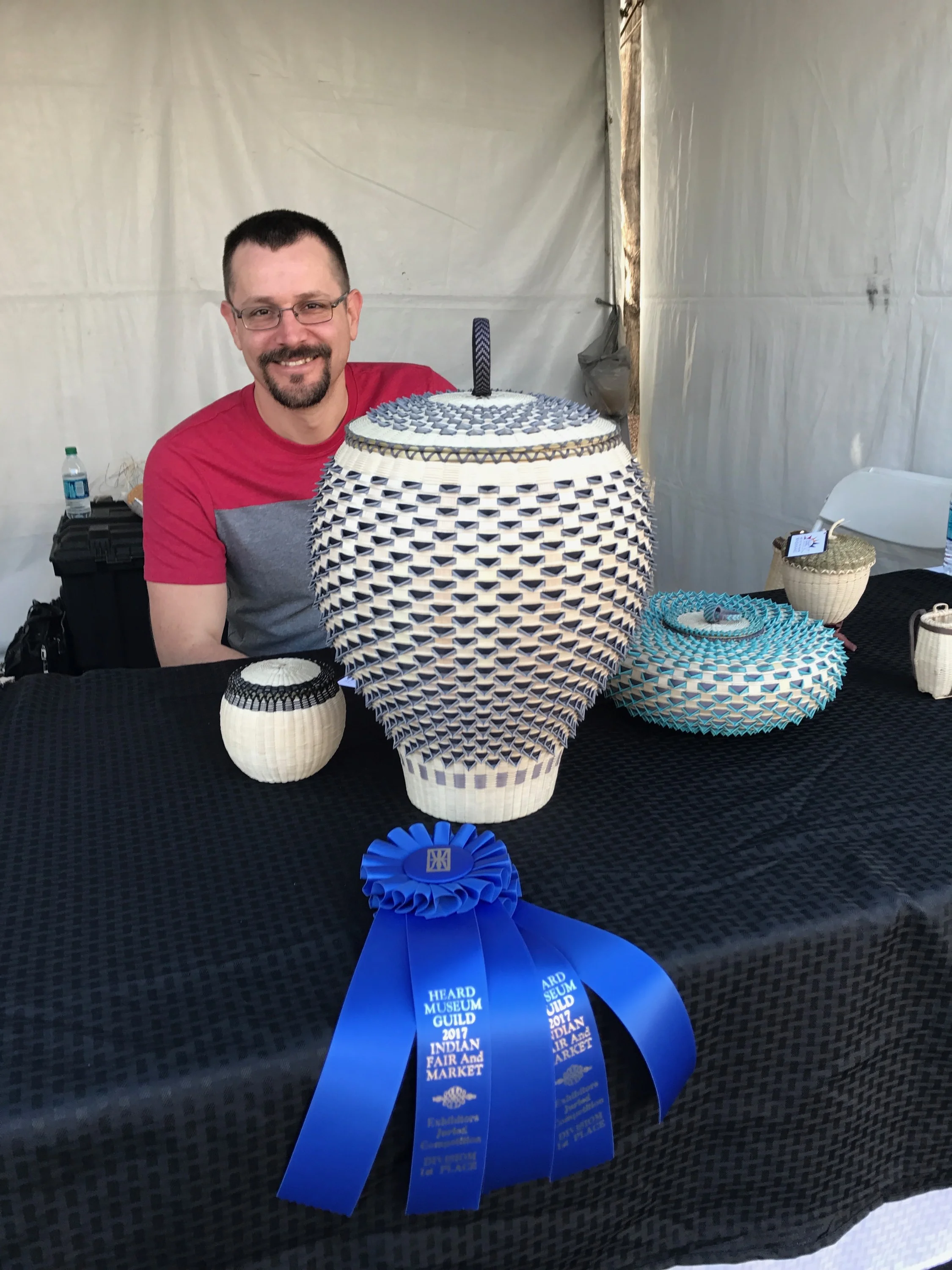Wabanaki Artists from Maine Win Big at Heard Museum Guild Indian Fair & Market
/Geo Neptune's first place and Best of Class basket.
Geo Neptune, Passamaquoddy, won first place and Best in Class in Division A baskets (natural fibers and cultural forms) and Sarah Sockbeson, Penobscot, won second place in the same division at the 60th annual Heard Museum Guild Indian Fair & Market on March 3-4, 2018. First-time attendee Jennifer Pictou, Micmac, won Honorable Mention in Division X (personal attire).
“This was my first experience at the Market and I was so nervous,” said Pictou. “All I really wanted was to make a good showing for my ancestors and let them know I am keeping our art forms alive. I can’t begin to tell you how surprised and pleased I was to win a ribbon for my beadwork. I’m truly humbled at the outcome and am grateful for the opportunity to show what a contemporary Mi’kmaq bead artist can do in a forum where there are so many fantastic and accomplished bead workers from many tribal nations.”
Jennifer Pictou's Honorable Mention winning clutch.
Pictou lives for the flash-in-the-moment art, and she likes to create art that makes people think. At the same time, her art is also rooted in deep traditional ways like storytelling and she takes inspiration from her ancestors’ visual work and combines elements from other eras in both Native and non-Native imagery. She celebrates her ancestral voices by using traditional tribal forms and creating something new.
Neptune is a Master Basketmaker, a Drag Queen, an activist, and an educator, and a 2017 Abbe Museum Fellow. As a two-spirit—an Indigenous cultural gender role that is a sacred blend of both male and female—they have begun using their art as a way to start a dialogue regarding gender identity and expression, sexuality and sexual orientation, and colonization as a way to combine their activism and art. Their winning basket, Apikcilu Binds the Sun, is their first Best of Class ribbon at the Heard Museum Guild Indian Fair & Market.
Sarah Sockbeson's second place basket.
In 2004, Sockbeson learned the history, techniques, and art that has become modern Native basketry. Today, she harvests and prepares all her own material from scratch. Making baskets requires a great deal of gathering and Sockbeson does all the prep work herself since she believes the selection process is an art unto itself. After she selects a brown ash tree, it is cut, the bark is then pounded continuously, split, gauged (cut), dyed, and woven. Her goal is to embrace the modern world, combine natural elements with bright innovative colors and original designs to create a fresh approach to a timeless art form.
Other Wabanaki artists invited to attend were Abbe Museum Trustee Jennifer Neptune, Penobscot, Gal Frey, Passamaquoddy, 2017 Abbe Museum Fellow Jeremy Frey, Passamaquoddy, and Molly Neptune Parker, Passamaquoddy. A complete list of artists can be found at http://heard.org/fair/the-fair/artists.
The Heard Museum Guild Indian Fair & Market draws nearly 15,000 visitors and more than 600 of the nation’s most outstanding and successful Native artists. Abbe Museum Indian Market Producer Dawn Spears, Narragansett/Choctaw, attended the Market to meet with artists about the Abbe Museum Indian Market coming up May 18-20, 2018, in downtown Bar Harbor. For more information, visit www.abbemuseum.org/indianmarket.






















